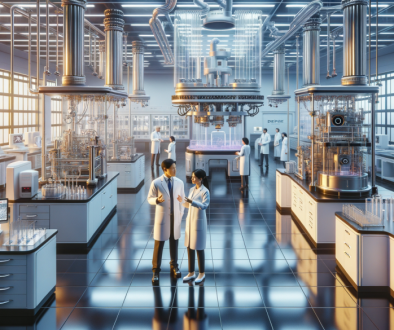Embracing Sustainability: Life Materials’ Circular Economy Journey
In today’s world, where environmental concerns dominate conversations and influence policies, businesses are increasingly recognizing the significance of adopting sustainable practices. Among the pioneers in this movement is Life Materials, a company that has seamlessly woven itself into the fabric of the circular economy model. Through its innovative and eco-friendly approaches, Life Materials sets a benchmark for sustainability that not only conserves resources but also enhances economic viability.
Material Efficiency: Reducing Waste, Maximizing Value
At the heart of Life Materials’ sustainable practices lies the principle of material efficiency. This concept emphasizes the imperative of minimizing waste while maximizing the inherent value of materials throughout their life cycle. By implementing robust strategies such as repair, reconditioning, remanufacturing, and recycling, the company significantly extends the lifespan of products, thereby curtailing the volume of waste generated.
One remarkable embodiment of this approach is Life Materials’ product line of refurbished electronics. Rather than discarding devices that have fallen out of use, the company meticulously inspects, repairs, and restores them to a condition that rivals new products. This practice not only conserves valuable resources by keeping materials in circulation but also offers consumers affordable and high-quality alternatives to brand-new devices. Furthermore, through refurbishment, Life Materials contributes to reducing e-waste, which is a growing environmental concern globally.
Key Takeaway:
- Material efficiency focuses on minimizing waste and maximizing the value of materials throughout their life cycle.
- Strategies like repair, reconditioning, remanufacturing, and recycling extend the lifespan of products and reduce waste.
Resource Reutilization: Closing the Loop
Life Materials recognizes that true sustainability lies in the ability to reuse resources across multiple cycles. This understanding drives the company’s strong emphasis on resource reutilization, a practice that fosters a closed-loop economy where materials are continuously recycled and reused. This approach not only reduces waste but also lessens the demand for new materials, thus alleviating the environmental burden associated with extraction and production.
A prime example of this commitment is Life Materials’ collaboration with local municipalities to collect and process electronic waste. By extracting valuable components from discarded devices, the company effectively feeds these materials back into the production cycle. This process not only reduces the need for virgin resources but also minimizes the environmental impact associated with mining, refining, and manufacturing new materials. As a result, Life Materials plays a crucial role in promoting a sustainable resource economy that benefits both the environment and the community.
Key Takeaway:
- Resource reutilization involves reusing materials and products in multiple cycles.
- This approach helps to reduce the consumption of non-renewable resources and promotes a closed-loop economy.
Sustainable Production and Consumption
Life Materials understands that sustainability extends beyond the products themselves; it encompasses the methods by which they are produced and consumed. The company has made a concerted effort to transition towards sustainable production and consumption patterns, ensuring that their environmental ethos resonates throughout the entire value chain.
On the production side, Life Materials designs products that are not only durable and repairable but also recyclable. This attention to sustainable design ensures that products can be easily disassembled and recycled at the end of their useful life, reducing the likelihood of them ending up in landfills. Additionally, Life Materials actively promotes behaviors that reduce waste and conserve resources. Through educational campaigns and partnerships with local communities, the company encourages consumers to adopt more sustainable lifestyles, such as practicing proper recycling, conserving energy, and engaging in responsible consumption.
Sustainable Production Checklist:
- Durable materials that withstand the test of time
- Repairable designs that allow for easy maintenance
- Recyclable components that minimize environmental impact
- Energy-efficient manufacturing processes that reduce carbon emissions
Key Takeaway:
- Sustainable production involves designing products that are durable, repairable, and recyclable.
- Promoting behaviors that reduce waste and conserve resources is crucial for sustainable consumption.
Waste Management and Green Technology
Effective waste management and the integration of green technology are pivotal components of Life Materials’ unwavering commitment to environmental sustainability and the circular economy model. The company employs innovative strategies that reframe waste as a valuable resource, thereby reducing its environmental impact while contributing to a more circular economy.
A notable example is Life Materials’ state-of-the-art waste processing facility, which employs advanced sorting and separation technologies to recover valuable materials from various waste streams. This facility not only diverts substantial amounts of waste from landfills but also ensures that these materials can be reintroduced into the production cycle, thereby creating a closed-loop system that benefits both the company and the environment.
def waste_processing(waste_stream):
sorted_materials = advanced_sorting(waste_stream)
recovered_materials = material_recovery(sorted_materials)
return recovered_materials
Moreover, Life Materials invests in green technologies designed to minimize its carbon footprint and promote energy efficiency. This includes the implementation of renewable energy sources, such as solar and wind power, alongside energy-efficient manufacturing processes and logistics solutions. By prioritizing green technology, the company not only reduces operational costs but also reinforces its commitment to sustainability.
Key Takeaway:
- Effective waste management treats waste as a resource, reducing environmental impact.
- The use of green technology, such as renewable energy sources and energy-efficient processes, contributes to environmental sustainability.
A Balanced Perspective
While it is vital to celebrate the remarkable strides made by Life Materials, it is equally important to acknowledge the challenges and areas for improvement that persist within the realm of sustainability. For instance, transitioning to a fully circular economy is a complex journey that involves navigating regulatory hurdles, supply chain limitations, and consumer awareness.
In addition, discussions surrounding the circular economy often raise questions about the feasibility of widespread implementation and the potential trade-offs that may arise. By addressing these potential criticisms and counterarguments, Life Materials can provide a more nuanced perspective that enhances the article’s objectivity and credibility. This balance between celebrating achievements and recognizing ongoing challenges can foster trust and inspire other businesses to engage in similar sustainable practices.
Key Takeaway:
- A balanced perspective acknowledges both the achievements and challenges in adopting sustainable practices.
- Addressing criticisms and counterarguments enhances credibility and encourages dialogue.
Accessibility and Inclusivity
To ensure that Life Materials’ message is accessible to a broader audience, it is essential to consider varying reading levels and backgrounds. Providing alternative explanations or analogies for complex concepts can make the content more inclusive and relatable. Using language that is clear, direct, and free from jargon will help demystify sustainability for those unfamiliar with the topic.
Furthermore, it is crucial to ensure that the language used is gender-neutral and avoids any potential biases or exclusionary terminology. By adopting an inclusive approach, Life Materials can engage a wider audience and foster a greater sense of community around sustainability initiatives.
Key Takeaway:
- Accessibility and inclusivity are vital in communicating sustainability concepts to diverse audiences.
- Using clear language and avoiding jargon helps demystify sustainability.
Conclusion
Life Materials’ journey toward embracing the circular economy model is a powerful testament to the company’s commitment to environmental sustainability. By prioritizing material efficiency, resource reutilization, sustainable production and consumption, and effective waste management, Life Materials demonstrates that businesses can thrive while minimizing their environmental impact.
As the world continues to confront the pressing challenges posed by climate change and resource depletion, the need for companies like Life Materials becomes increasingly critical. Their innovative approaches not only contribute to a more sustainable future but also serve as an inspiring model for other businesses to emulate. By adopting circular economy principles, organizations can pave the way for a brighter and more sustainable future.
Ultimately, Life Materials’ success in integrating into the circular economy model serves as a powerful reminder that sustainability and economic growth can coexist harmoniously. This journey emphasizes the importance of collective action in creating a sustainable world for generations to come.
In addition to the company’s ongoing efforts, it is vital for stakeholders—including consumers, regulators, and other businesses—to engage in dialogue and collaboration. Collaboration can drive innovation and share best practices that expand the reach and impact of sustainable initiatives. By working together, these stakeholders can help create a robust framework that supports the circular economy and encourages sustainable behaviors across various sectors.
Relevant Sources:
- https://www.sciencedirect.com/science/article/pii/S0921344917302835
- https://www.mdpi.com/2071-1050/15/23/16532
- https://www.sciencedirect.com/science/article/pii/S0921344923001374
- https://onlinelibrary.wiley.com/doi/full/10.1002/sd.2507
- https://www.ncbi.nlm.nih.gov/pmc/articles/PMC9532236
.




